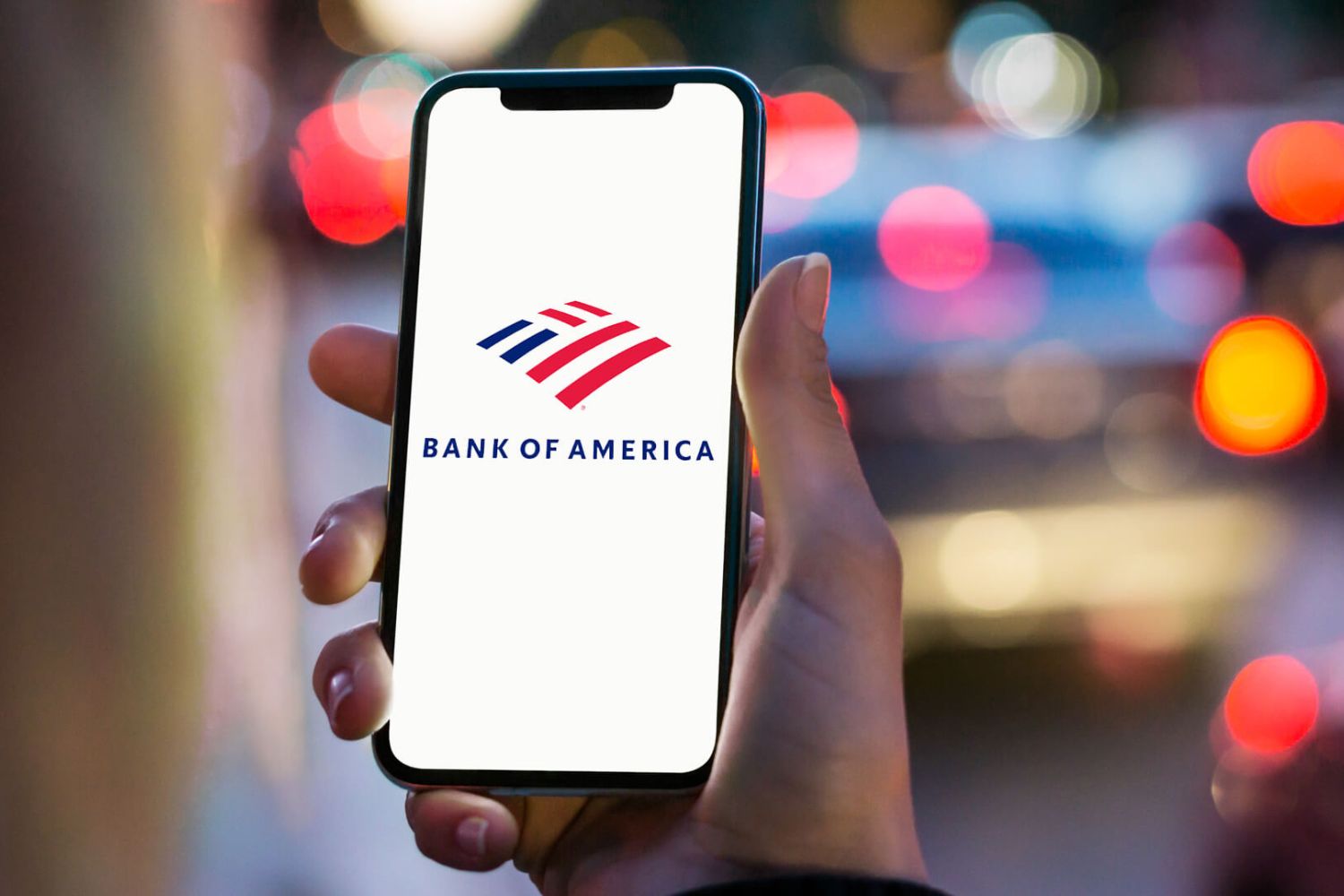Introduction
P2P (Peer-to-Peer) banking has revolutionized the financial industry, offering customers alternative ways to borrow, lend, and transfer money. This innovative approach eliminates the need for traditional intermediaries such as banks, resulting in a more direct and transparent financial system. With the rise of digital technology, P2P banking has gained significant traction, attracting both individuals and businesses looking for efficient and cost-effective financial solutions.
Definition of P2P in Banking:
P2P in banking refers to a decentralized financial model where individuals can lend and borrow money directly from one another using online platforms. These platforms connect borrowers and lenders and facilitate the borrowing and lending process, leveraging technology to streamline transactions and minimize costs.
History of P2P Banking:
The concept of P2P banking dates back to the early 2000s when platforms like Zopa (UK) and Prosper (US) started pioneering this alternative financial model. Initially focused on P2P lending, these platforms aimed to disrupt the traditional banking sector by enabling individuals to lend and borrow funds from one another at lower interest rates.
Benefits of P2P in Banking:
P2P banking offers several advantages over traditional banking, making it an attractive option for individuals and businesses alike. Firstly, it provides access to credit for borrowers who may have difficulty obtaining loans from traditional financial institutions due to stringent eligibility criteria. P2P lending platforms assess borrowers based on different criteria, often taking into account factors beyond credit scores.
Secondly, P2P banking often offers lower interest rates for borrowers compared to traditional banks. By cutting out intermediaries, P2P lenders can provide competitive rates, making loans more affordable and accessible for borrowers.
Thirdly, P2P banking can also be a viable investment option for lenders. Individuals looking to diversify their investment portfolios can allocate funds to P2P lending platforms, earning interest on the loans they provide. This offers an alternative investment opportunity with potentially higher returns compared to traditional savings accounts.
Definition of P2P in Banking
P2P (Peer-to-Peer) in banking refers to a decentralized financial model that allows individuals to directly lend and borrow money from each other through online platforms. It eliminates the need for traditional financial intermediaries like banks, enabling a more direct and transparent lending process.
In P2P lending, borrowers and lenders are connected through dedicated online platforms that act as intermediaries, facilitating the loan transactions. These platforms provide a marketplace where borrowers can request loans and lenders can browse and select loan opportunities that match their preferences. Once a loan request is accepted, borrowers receive the funds directly from the lenders, and repayments are made through the platform.
Unlike traditional banking systems, P2P lending platforms rely on technology and algorithms to assess the creditworthiness of borrowers. They consider various factors beyond credit scores, such as income, employment history, and even social connections, to evaluate the borrower’s repayment capability. This approach enables individuals who may face difficulty securing loans from conventional banks to access credit.
P2P lending platforms typically charge fees to borrowers and lenders for their services. Borrowers may incur origination fees or application fees, while lenders may face service fees or transaction fees on their earnings. The fees charged by P2P lending platforms can vary, so it’s important for borrowers and lenders to carefully review and compare platform offerings to ensure they are getting the best terms for their loans or investments.
It is important to note that P2P lending should not be confused with crowdfunding, although they share some similarities. P2P lending involves borrowing and lending money, while crowdfunding platforms allow individuals to contribute or invest in various projects or ventures in exchange for rewards or equity.
P2P lending has gained significant popularity due to its ability to offer flexible loan options and lower interest rates compared to traditional financial institutions. However, it’s crucial for both borrowers and lenders to exercise caution and thoroughly research the platforms they choose to engage with. P2P lending is not without risks, and there is always a possibility of default or financial loss.
History of P2P Banking
The concept of P2P (Peer-to-Peer) banking originated in the early 2000s, driven by the desire to disrupt the traditional financial system and provide individuals with more control over their finances. The pioneers of P2P banking were platforms such as Zopa in the UK and Prosper in the United States.
Zopa, founded in 2005, was one of the first platforms to introduce P2P lending. It aimed to connect borrowers seeking loans with individual lenders who were looking to invest their money and earn interest. Zopa’s innovative approach challenged the traditional banking model by creating a marketplace that directly linked borrowers and lenders, eliminating the need for intermediaries.
Following in Zopa’s footsteps, Prosper was launched in 2006 and quickly gained popularity in the United States. Prosper introduced the concept of online lending, allowing borrowers to request loans of various amounts and terms while individual lenders could fund portions of those loans in exchange for interest payments.
As P2P lending platforms gained traction, they faced regulatory challenges and scrutiny from traditional financial institutions. Governments and regulatory bodies had to adapt to this new model and develop frameworks to ensure consumer protection and fair lending practices. Over time, P2P lending platforms became more regulated, which increased confidence among borrowers and lenders and facilitated the growth of the industry.
In addition to P2P lending, the concept of P2P in banking expanded to include other financial services. P2P payment platforms such as Venmo and PayPal enabled individuals to transfer money directly to one another, eliminating the need for traditional banking transfers. P2P investing platforms like LendingClub and Funding Circle allowed individuals to invest in loans and earn interest on their investments.
Today, P2P banking has become more mainstream, with a growing number of platforms offering a range of financial services. These platforms leverage technology to provide easy-to-use interfaces, efficient online processes, and advanced risk assessment algorithms. The increased accessibility and convenience of P2P banking have attracted both borrowers and lenders, creating a more inclusive financial system that challenges the traditional banking model.
While P2P banking has seen remarkable growth and success, it has also faced challenges along the way. Economic downturns and shifts in the lending landscape have impacted the industry, requiring platforms to adapt and adjust their criteria and offerings. Despite these challenges, the concept of P2P banking continues to evolve and provide alternative financial solutions for individuals and businesses.
Benefits of P2P in Banking
P2P (Peer-to-Peer) banking offers several advantages over traditional banking, making it an attractive option for both borrowers and lenders. Let’s explore some of the key benefits:
1. Access to Credit: P2P banking provides an alternative source of credit for borrowers who may have difficulty obtaining loans from traditional financial institutions. These platforms often have more flexible eligibility criteria, considering factors beyond credit scores. This opens up opportunities for individuals who may have been turned down by banks to access much-needed funds.
2. Lower Interest Rates: P2P lending platforms generally offer lower interest rates compared to traditional banks. By cutting out intermediaries, borrowers can often secure loans at more affordable rates, saving them money in interest payments over the loan term. This is particularly beneficial for individuals with good credit history who may be eligible for lower rates through P2P lending platforms.
3. Diversification of Investments: P2P lending is not limited to borrowers; it also presents an opportunity for individuals to become lenders and diversify their investment portfolios. Lenders can allocate funds to different loans, spreading their risk across multiple borrowers. This provides an additional avenue for individuals to earn passive income through interest payments from borrowers.
4. Streamlined Application Process: P2P lending platforms offer a convenient and streamlined application process. Borrowers can easily create loan requests and provide necessary documentation online. The platforms use advanced algorithms to assess creditworthiness, often providing loan approval or disapproval within a short period. This eliminates the lengthy and complex processes associated with traditional banking loan applications.
5. Transparency and Direct Interaction: P2P banking fosters transparency and direct interaction between borrowers and lenders. Borrowers have access to multiple loan options and can choose the best terms that suit their needs. Lenders can review borrower profiles and make informed decisions based on their risk appetite. This level of transparency allows borrowers and lenders to have a clearer understanding of the terms and conditions of the loans.
6. Financial Inclusion: P2P lending promotes financial inclusion by providing access to credit for individuals who may have limited options due to geographical, economic, or social reasons. The online nature of P2P lending platforms ensures that individuals can participate in the lending process regardless of their location, opening up opportunities for those excluded from traditional banking systems.
7. Innovative Technologies: P2P banking leverages innovative technologies to streamline processes and ensure efficient operations. From online platforms to advanced risk assessment algorithms, these technologies enhance the overall user experience, making borrowing and lending more accessible and efficient.
Overall, P2P banking offers a range of benefits for both borrowers and lenders, creating a more inclusive and efficient financial system compared to traditional banking. However, it is important for individuals to conduct their own due diligence and carefully consider the risks associated with P2P lending before engaging with any platform.
Disadvantages of P2P in Banking
While P2P (Peer-to-Peer) banking offers numerous benefits, it also comes with some inherent disadvantages that borrowers and lenders should consider. Here are some of the key drawbacks:
1. Higher Risk: P2P lending involves a higher level of risk compared to traditional banking. When borrowers and lenders engage directly, there is an increased possibility of defaults or delayed repayments, which can result in financial losses for lenders. Lenders should carefully evaluate the creditworthiness of borrowers and diversify their investments to mitigate these risks.
2. Limited Regulatory Protection: P2P lending platforms are subject to less regulatory oversight compared to traditional banks. While regulations have increased over time, there may still be gaps in consumer protection and dispute resolution processes. It is essential for borrowers and lenders to thoroughly research and choose reputable platforms that comply with relevant regulations.
3. Platform Reliability: P2P lending platforms are reliant on their technology and infrastructure. Technical glitches or system failures could disrupt the lending process, affecting both borrowers and lenders. It is important to choose platforms with a solid track record and robust technology infrastructure to minimize the risk of potential disruptions.
4. Limited Loan Options: P2P lending platforms may have limitations when it comes to the types of loans available. Traditional banks generally offer a wide range of loan products, including specialized loans for specific purposes. P2P platforms may not have the same level of variety, limiting the options available to borrowers with unique needs or requirements.
5. Lack of Personalized Service: P2P lending platforms often operate on a large scale, connecting numerous borrowers and lenders. As a result, the level of personalized service and support may be limited compared to traditional banks. Borrowers and lenders may have less direct contact with platform representatives, which can be challenging when addressing specific queries or concerns.
6. Potential for Fraud: As with any online financial platform, there is a risk of fraud within the P2P banking space. While reputable platforms implement robust security measures, there may still be instances of fraudulent activity. Borrowers and lenders should exercise caution and verify the authenticity and credibility of individuals or entities involved in the lending process.
7. Limited Deposit Protection: Unlike traditional banking, P2P lending does not offer deposit protection schemes provided by regulatory bodies. This means that in the event of platform insolvency or financial loss, borrowers and lenders may not have the same level of protection as depositors in traditional banking institutions.
It is important for individuals considering P2P banking to carefully evaluate these disadvantages and determine whether the potential benefits outweigh the risks. Conducting thorough research, diversifying investments, and selecting reputable platforms are crucial steps to mitigate these disadvantages and make informed decisions.
P2P Lending
P2P (Peer-to-Peer) lending is a prominent component of P2P banking, allowing individuals to directly lend and borrow money from each other without the involvement of traditional financial institutions. P2P lending platforms act as intermediaries, connecting borrowers and lenders and facilitating loan transactions.
How It Works:
In P2P lending, borrowers create loan listings on a P2P lending platform, detailing the loan amount, purpose, and interest rate they are willing to pay. Lenders then review these loan listings and choose which loans to invest in based on their risk appetite and investment preferences.
Once a lender selects a loan, they fund a portion of the loan amount, which is then combined with other lenders’ contributions to fulfill the borrower’s loan request. The borrower receives the funds directly from the lenders, and repayments, including principal and interest, are made back to the lenders through the P2P lending platform.
Benefits for Borrowers:
P2P lending offers several advantages for borrowers. Firstly, it provides an alternative source of credit for individuals who may have difficulty obtaining loans from traditional financial institutions. P2P lending platforms often have more flexible eligibility criteria, considering other factors beyond credit scores.
Secondly, P2P lending platforms can offer lower interest rates compared to traditional banks. By removing intermediaries, borrowers can often secure loans at more affordable rates, saving money in interest payments over the loan term.
Thirdly, the application process for P2P lending is relatively streamlined and convenient. Borrowers can easily create loan requests online, provide necessary documentation, and receive quick evaluations of their loan applications. This eliminates the lengthy and complex processes associated with traditional banking loan applications.
Benefits for Lenders:
P2P lending also offers advantages for lenders. Firstly, it presents an opportunity for individuals to diversify their investment portfolio. Lenders can allocate funds to different loans, spreading their risk across multiple borrowers. P2P lending allows lenders to earn interest on their investments, potentially providing higher returns compared to traditional savings accounts.
Secondly, P2P lending can offer higher interest rates compared to other investment options. Lenders have the flexibility to choose loans that match their risk tolerance and investment goals, potentially earning attractive returns on their capital.
Finally, P2P lending platforms often provide tools and data that aid lenders in assessing the creditworthiness of borrowers, enhancing the decision-making process for potential investments.
Overall, P2P lending has revolutionized the lending landscape, providing borrowers with accessible credit options and lenders with investment opportunities outside of traditional banking channels. However, it’s essential for participants to carefully evaluate the risks associated with P2P lending and conduct thorough research before engaging with any platform.
P2P Payments
P2P (Peer-to-Peer) payments have become increasingly popular as a convenient and efficient way to transfer money directly between individuals without the need for traditional banking intermediaries. P2P payment platforms enable users to send and receive funds quickly and securely, making it a convenient alternative to cash or traditional payment methods.
How It Works:
P2P payment platforms provide a seamless payment experience by connecting users through digital channels such as mobile apps or websites. Users can link their bank accounts, credit cards, or digital wallets to the platform to facilitate funds transfer.
To send a P2P payment, users typically need to know the recipient’s email address, mobile number, or username associated with their P2P payment account. Once the recipient is identified, the user can enter the payment amount and send the funds. The recipient will receive a notification and can then access the transferred funds through their P2P payment account, often with the option to transfer the funds to their linked bank account or digital wallet.
Benefits of P2P Payments:
P2P payments offer several advantages over traditional payment methods:
1. Convenience: P2P payment platforms allow users to send and receive money quickly and easily from their mobile device or computer. Payments can be made anytime, anywhere, eliminating the need for physical cash or checks.
2. Speed: P2P payments are typically processed in real-time or near real-time, ensuring that the funds are transferred quickly between users. This makes it ideal for urgent or time-sensitive transactions.
3. Security: P2P payment platforms employ robust security measures to protect user information and transaction details. Users often have the option to use authentication methods such as PINs, passwords, or biometric features to ensure secure access to their accounts.
4. Splitting Expenses: P2P payment platforms often provide features that allow users to split expenses easily. Whether it’s splitting a dinner bill, rent, or group gifts, users can divide the payment among multiple people, making it convenient for shared expenses.
5. Enhanced Tracking and Recordkeeping: P2P payment platforms provide users with a transaction history, allowing them to track their payments and monitor their finances conveniently. This can be helpful for personal budgeting or keeping track of shared expenses.
6. International Transfers: Some P2P payment platforms offer international transfer capabilities, enabling users to send money to other countries quickly and at a lower cost compared to traditional remittance services.
It’s important to note that while P2P payments offer convenience and efficiency, users should be cautious when sharing personal or financial information. Users should also be mindful of any fees associated with P2P payments, such as transaction fees for expedited transfers or fees for transferring funds to a linked bank account.
P2P payments have revolutionized the way individuals transfer money, providing a seamless and user-friendly experience. As technology continues to advance, we can expect P2P payment platforms to evolve, offering even more innovative features and capabilities to meet the ever-changing needs of users.
P2P Investing
P2P (Peer-to-Peer) investing allows individuals to allocate their capital directly to borrowers through online platforms, bypassing traditional financial intermediaries like banks. P2P investing offers an alternative investment opportunity, allowing individuals to earn returns by lending money to borrowers in need.
How It Works:
On P2P investing platforms, individuals can browse and select loan opportunities that match their risk appetite and investment preferences. These loan opportunities are typically listed by borrowers seeking funds for various purposes, such as personal loans, business loans, or debt consolidation.
Investors, also known as lenders, can review the loan details, including the borrower’s credit profile, loan amount, interest rate, and loan term. They can then choose to invest a portion of the requested loan amount, funding the loan along with other lenders. Once the loan is fully funded, the borrower receives the loan funds, and periodic repayments (including principal and interest) are made back to the investors through the P2P investing platform.
Benefits of P2P Investing:
P2P investing offers several benefits for individuals looking to diversify their investment portfolios:
1. High Potential Returns: P2P investing can provide attractive returns compared to traditional savings accounts or other low-yield investments. Depending on the borrower’s creditworthiness and the interest rate assigned to the loan, P2P investors can potentially earn higher interest rates on their invested funds.
2. Diversification: P2P investing allows individuals to diversify their investment portfolios by lending to multiple borrowers across different loans. Spreading investments across a range of borrowers and loan types can help to mitigate risks and minimize exposure to any individual loan default.
3. Control and Flexibility: P2P investors have control over their investment decisions, as they can select and fund specific loan opportunities based on their risk tolerance and preferred returns. Investors have the flexibility to choose the loan terms, interest rates, and loan amounts that align with their investment goals.
4. Transparency and Data: P2P investing platforms provide investors with detailed information about the borrowers, including credit scores, employment history, and loan purpose. This transparency allows investors to make informed decisions based on the borrower’s credit profile and risk assessment.
5. User-Friendly Interfaces: P2P investing platforms typically offer easy-to-use interfaces, providing investors with access to their investment accounts, loan performance, and portfolio diversification. Investors can monitor their investments and track their returns conveniently.
It’s important for investors to carefully assess the risk associated with P2P investing. The potential for higher returns is accompanied by a higher level of risk, as there is the possibility of borrower defaults or delayed repayments. Investors should conduct due diligence, thoroughly research the borrower and loan opportunities, and diversify their investments to manage these risks effectively.
P2P investing has opened up a new avenue for individuals to earn returns and diversify their investment portfolios outside of traditional channels. It provides an opportunity for investors to participate in the lending market directly, potentially earning attractive returns while supporting borrowers in need of funds.
P2P Money Transfers
P2P (Peer-to-Peer) money transfers have revolutionized the way individuals send and receive money, offering a convenient and efficient alternative to traditional banking methods. P2P money transfer platforms enable users to transfer funds directly to other individuals using digital channels, eliminating the need for physical cash or traditional wire transfers.
How It Works:
P2P money transfer platforms typically operate through mobile apps or websites, allowing users to send and receive money using their connected bank accounts, credit cards, or digital wallets. Users can easily link their preferred payment methods to the platform for quick and seamless transactions.
To initiate a P2P money transfer, users typically need to know the recipient’s email address, mobile number, or username associated with their P2P money transfer account. Once the recipient is identified, the user can enter the transfer amount and send the funds. The recipient will receive a notification and can access the transferred funds through their P2P money transfer account, often with the option to transfer the funds to their linked bank account or digital wallet.
Benefits of P2P Money Transfers:
P2P money transfers offer several benefits for individuals looking for quick and hassle-free ways to send or receive money:
1. Convenience: P2P money transfer platforms enable users to send and receive funds conveniently from their mobile device or computer. Users can initiate transfers anytime, anywhere, without the need to visit a bank or use physical cash.
2. Speed: P2P money transfers are typically processed in real-time or near real-time, ensuring swift delivery of funds to the recipient. This makes P2P transfers ideal for urgent or time-sensitive transactions, such as splitting expenses or sending emergency funds.
3. Cost-Effectiveness: P2P money transfers can often be more cost-effective than traditional wire transfers, as they may involve lower transaction fees or no fees at all, depending on the platform used. This can result in significant savings, especially for international transfers.
4. Security: P2P money transfer platforms prioritize the security of user information and transactions. These platforms employ advanced encryption and authentication measures to protect user data and ensure secure transfer of funds.
5. Splitting Expenses: P2P money transfer platforms often provide features that allow users to split expenses easily. Users can divide the payment among multiple individuals, making it convenient for shared bills, group outings, or collaborative projects.
6. International Transfers: Some P2P money transfer platforms offer international transfer capabilities, enabling users to send funds to other countries quickly and at a lower cost compared to traditional remittance services. This can be particularly useful for individuals with foreign family members or businesses involved in international transactions.
It is important to use reputable and secure P2P money transfer platforms to ensure the safe transfer of funds. Users should also be aware of transaction limits, availability in different countries, and any applicable fees before initiating transfers.
P2P money transfers have transformed the way individuals send and receive money, offering a convenient, fast, and cost-effective alternative to traditional banking methods. As technology continues to advance, we can expect P2P money transfer platforms to evolve and provide users with even more seamless and innovative money transfer experiences.
P2P Banking Regulations
The rise of P2P (Peer-to-Peer) banking has prompted the need for regulatory frameworks to ensure consumer protection, market stability, and fair lending practices. While P2P banking has gained popularity, regulations vary across different countries and jurisdictions.
Regulatory Landscape:
P2P banking platforms operate within the legal and regulatory frameworks set by each country or region. In some jurisdictions, P2P banking falls under existing financial regulations, while others have developed specific regulations for P2P lending and related activities.
Regulations typically cover areas such as borrower and lender protections, platform registration and licensing requirements, transparency of loan terms, and risk management practices. Regulators aim to strike a balance between fostering innovation and protecting the interests of consumers and investors involved in P2P banking.
Consumer Protection:
Regulatory measures are in place to safeguard the interests of borrowers and lenders participating in P2P banking. These measures often include requirements for P2P lending platforms to disclose loan terms, fees, and potential risks to borrowers. Additionally, regulations may mandate platforms to assess the creditworthiness of borrowers and provide transparent information on loan repayment schedules.
In many jurisdictions, platforms must comply with anti-money laundering (AML) and know-your-customer (KYC) regulations to ensure the legitimacy of transactions and prevent fraudulent activities.
Lender Protections:
Regulations may also aim to protect lenders who participate in P2P lending. Requirements may include adequate disclosure of loan details, borrower information, and risk disclosures to help lenders make informed investment decisions. Some jurisdictions impose limits on the maximum amount individuals can invest to reduce the potential risk associated with P2P lending.
Platform Regulations:
P2P banking platforms themselves are subject to specific regulations. Registering or obtaining a license from financial regulatory authorities is often a prerequisite for operating as a P2P lending platform. Regulatory bodies closely monitor platforms to ensure compliance with operational standards, risk management practices, and customer data protection regulations.
Platform regulations may also include governance requirements, such as maintaining sound and transparent internal control mechanisms, providing detailed financial reports, and ensuring adequate measures are in place to handle customer complaints and disputes.
Regulatory Evolvement:
The regulatory environment for P2P banking is continually evolving as regulators adapt to the changing landscape. Authorities seek to strike the right balance between fostering innovation and protecting consumers and lenders.
Regulators often engage in ongoing consultations and dialogue with industry participants, soliciting feedback to shape regulatory frameworks that encourage fair and responsible practices within the P2P banking industry.
It is imperative for individuals involved in P2P banking, whether as borrowers or lenders, to understand the applicable regulations in their respective jurisdictions. Staying informed about regulatory developments and choosing platforms that comply with relevant regulations is essential to ensure a safe and secure P2P banking experience.
As P2P banking continues to grow globally, it is likely that regulatory frameworks will continue to evolve and become more robust to ensure consumer protection and maintain market integrity in this increasingly popular financial domain.
Conclusion
P2P (Peer-to-Peer) banking has transformed the financial industry, offering individuals and businesses alternative ways to borrow, lend, and transfer money. With the rise of digital technology, P2P banking platforms have gained significant traction, providing direct and transparent financial solutions that challenge the traditional banking model.
From P2P lending to P2P payments and investing, these platforms have revolutionized how individuals access credit, transfer money, and diversify their investment portfolios. P2P banking offers numerous benefits such as increased access to credit, lower interest rates for borrowers, higher potential returns for lenders, streamlined processes, and enhanced transparency.
However, it is essential for participants to be aware of the potential risks associated with P2P banking. These risks, such as borrower defaults, limited regulatory protection, platform reliability, and potential fraud, require users to exercise caution and conduct thorough research before engaging with any P2P banking platform.
Regulatory frameworks for P2P banking are continually evolving to ensure consumer protection and market stability. Governments and regulatory bodies have introduced measures to safeguard the interests of borrowers, lenders, and the overall integrity of the P2P banking ecosystem. Compliance with regulations, transparency, and responsible lending and investing practices are crucial for the sustainable growth of the industry.
As P2P banking continues to gain momentum, it is important for individuals to stay informed about developments in the sector, such as changes in regulations and emerging platforms. This knowledge will help users make informed decisions and choose reputable platforms that offer secure and efficient P2P banking services.
P2P banking has disrupted the financial landscape, providing individuals with more control over their financial transactions and paving the way for a more inclusive and accessible financial system. As technology advances and regulations continue to evolve, it will be fascinating to witness the continued growth and innovation within the P2P banking industry.

























